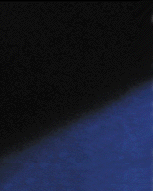|
|
 |
| This Month | Seoul in Breif | Specific Maps of Seoul | |||
| Where to Stay | What to Eat | What to Do | What to See | What to Buy | What to Know |
| Home >> Art & Craft >> Tal (Mask) |
and is usually made of either paper, wood or earth For many years, masks were used to conceal identity - for example, primitive humans wore masks whilst approaching animals when hunting. However, the role of the mask changed in the periods that followed, when people used masks for rituals, and attributed magic to masks. It is believed that the mask originated in Korea in 300BC, as a relic from the New Stone Age or the Bronze Age. In these eras, people frequently made small images of human figures or that of animals by using stone or animal bones and the existence of masks is suggested by wall paintings discovered from that period. The Classification of Masks Masks can be placed into either of two classifications - the mask that is used for ceremonies, and the mask that is used for drama or dance. As for the mask used for the ceremony, this is traditionally used to pray to the gods for one¡¯s happiness or one¡¯s work, and to pray to exorcise evil sprits from someone. Some Korean masks function as artistic masks as well as ceremonial masks. For example, the ¡®Cheo Yong¡¯ Mask was used to exorcise evil sprits and was also used for dance. The masks of faith were classified into two types; the sacred mask and the ¡®Ku Na¡¯ mask. The Sacred mask was again used to pray to the gods for one¡¯s happiness or one¡¯s work, and the ¡®Ku Na mask¡¯ was used to exorcise evil sprits. The masks of art were classified into several types according to their use; the drama mask, the dance mask and the folk mask. Types of Mask Hahoe Mask This was designed as a national treasure in 1964, and can now be found in the National Central Museum.The ¡®Ha Hwe¡¯ mask includes 9 masks called nobleman, doll, scholar, Buddhist priest and so on, and there are also 3 other masks called unmarried young man etc., although these 3 masks no longer exist. Byeongsan Mask This mask was also designed as a national treasure, although it¡¯s very different from that of the Ha Hwe, as it has been handed down from the village called ¡®Byeong San¡¯. It is made up of 2 masks called ¡®nobleman¡¯ and ¡®scholar¡¯, both of which were made without a jaw, as the men wearing the mask told jokes freely it seems. Bangsangssi Mask Designed as an important folk mask, Bang Sang Ssi was discovered with funeral equipment in the storehouse of Chang Deok palace. This mask was made of pine board, and is about 72 cm of length. It played a role in exorcising minor demons, and was placed in the cart ahead of the funeral procession. The Bang Sang Ssi mask was made of straw, paper and wood, and people burned it after finishing the funeral ceremony. |
 |
| Copyright ¨Ï 2001 What's On Communications Inc. All rights reserved. Write to Us post@whatsonkorea.com. |